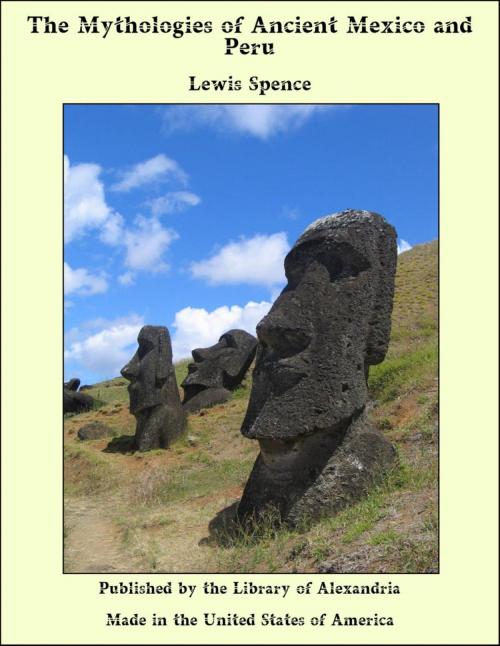The Mythologies of Ancient Mexico and Peru
Nonfiction, Religion & Spirituality, New Age, History, Fiction & Literature| Author: | Lewis Spence | ISBN: | 9781465584236 |
| Publisher: | Library of Alexandria | Publication: | March 8, 2015 |
| Imprint: | Language: | English |
| Author: | Lewis Spence |
| ISBN: | 9781465584236 |
| Publisher: | Library of Alexandria |
| Publication: | March 8, 2015 |
| Imprint: | |
| Language: | English |
The question of the origin of the religions of ancient Mexico and Peru is unalterably associated with that of the origin of the native races of America themselves—not that the two questions admit of simultaneous settlement, but that in order to prove the indigenous nature of the American mythologies it is necessary to show the extreme improbability of Asiatic or European influence upon them, and therefore of relatively late foreign immigration into the Western Hemisphere. As regards the vexed question of the origin of the American races it has been thought best to relegate all proof of a purely speculative or legendary character to a chapter at the end of the book, and for the present to deal with data concerning the trustworthiness of which there is little division of opinion. The controversy as to the manner in which the American continent was first peopled is as old as its discovery. For four hundred years historians and antiquarians have disputed as to what race should have the honour of first colonising the New World. To nearly every nation ancient and modern has been credited the glory of peopling the two Americas; and it is only within comparatively recent years that any reasonable theory has been advanced in connection with the subject. It is now generally admitted that the peopling of the American continent must have taken place at a period little distant to the original settlement of man in Europe. The geological epoch generally assumed for the human settlement of America is the Pleistocene (Quaternary) in some of its interglacial conditions; that is, in some of the recurrent periods of mildness during the Great Ice Age. There is, however, a possibility that the continent may have been peopled in Tertiary times. The first inhabitants were, however, not of the Red Man type.
The question of the origin of the religions of ancient Mexico and Peru is unalterably associated with that of the origin of the native races of America themselves—not that the two questions admit of simultaneous settlement, but that in order to prove the indigenous nature of the American mythologies it is necessary to show the extreme improbability of Asiatic or European influence upon them, and therefore of relatively late foreign immigration into the Western Hemisphere. As regards the vexed question of the origin of the American races it has been thought best to relegate all proof of a purely speculative or legendary character to a chapter at the end of the book, and for the present to deal with data concerning the trustworthiness of which there is little division of opinion. The controversy as to the manner in which the American continent was first peopled is as old as its discovery. For four hundred years historians and antiquarians have disputed as to what race should have the honour of first colonising the New World. To nearly every nation ancient and modern has been credited the glory of peopling the two Americas; and it is only within comparatively recent years that any reasonable theory has been advanced in connection with the subject. It is now generally admitted that the peopling of the American continent must have taken place at a period little distant to the original settlement of man in Europe. The geological epoch generally assumed for the human settlement of America is the Pleistocene (Quaternary) in some of its interglacial conditions; that is, in some of the recurrent periods of mildness during the Great Ice Age. There is, however, a possibility that the continent may have been peopled in Tertiary times. The first inhabitants were, however, not of the Red Man type.















